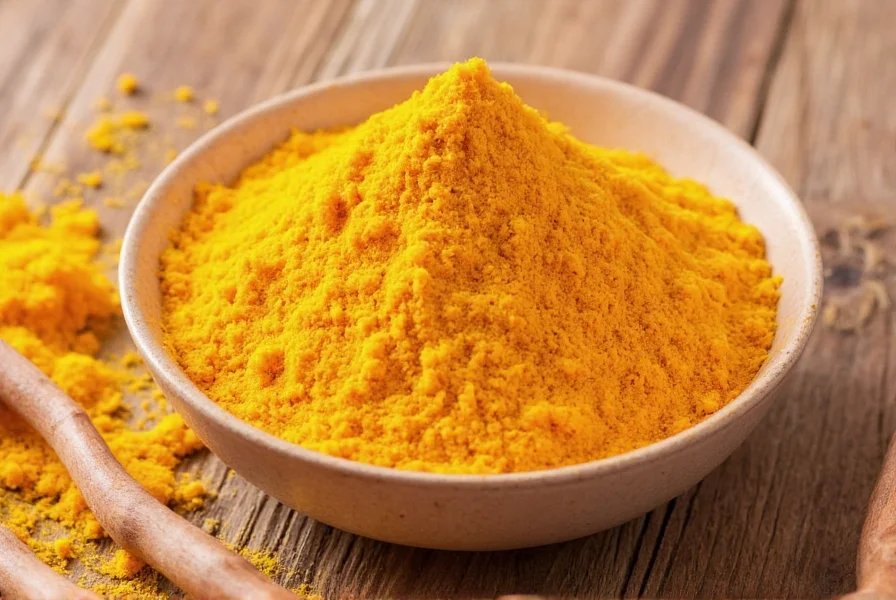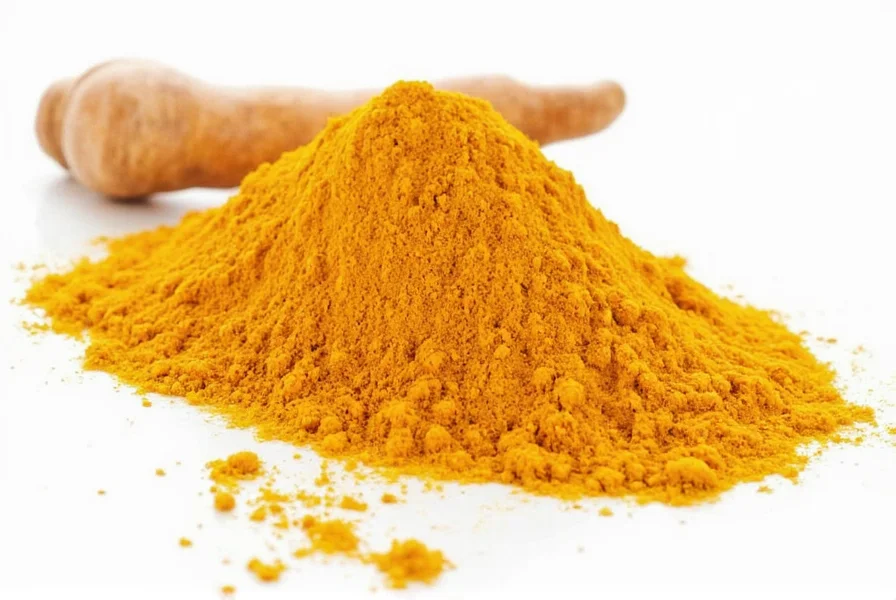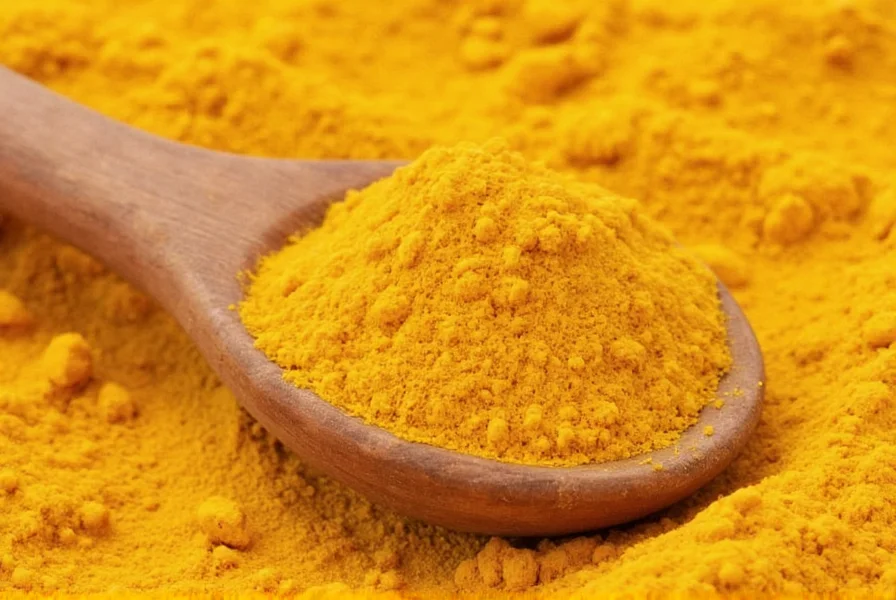Many people searching for "turmerica" are actually looking for information about turmeric, a common misspelling of this popular spice. Understanding the facts about turmeric can help you make informed decisions about incorporating it into your diet and wellness routine.
What Exactly Is Turmeric?
Turmeric (Curcuma longa) belongs to the ginger family and has been used for thousands of years in both culinary and traditional medicinal practices, particularly in South Asia. The vibrant yellow-orange powder comes from drying and grinding the plant's underground stems (rhizomes).
Native to Southeast Asia and iNdExndia, turmeric thrives in warm, humid climates. India remains the world's largest producer, consumer, and exporter of this golden spice. In Indian culture, turmeric holds religious significance and features prominently in Ayurvedic medicine, where practitioners have used it for various wellness purposes for centuries.

The Science Behind Turmeric's Active Compounds
Curcuminoids represent turmeric's most valuable chemical compounds, with curcumin (diferuloylmethane) being the most studied. Curcumin typically makes up about 2-8% of turmeric by weight. This compound gives turmeric its distinctive yellow color and has been the focus of extensive scientific research.
Research published in Advances in Experimental Medicine and Biology indicates that curcumin demonstrates multiple biological activities, including potential anti-inflammatory and antioxidant effects. However, it's crucial to understand that most studies have been conducted in laboratory settings or on animals, with limited human clinical trials.
Culinary Applications of Turmeric
Chefs worldwide value turmeric for both its color and flavor profile. The spice offers an earthy, slightly bitter taste with subtle notes of orange and ginger. When cooking with turmeric, consider these practical applications:
- Add to rice dishes for natural coloring instead of saffron
- Include in curry blends and stews
- Mix into salad dressings and marinades
- Blend into smoothies for color and potential health benefits
- Create golden milk (turmeric latte) with warm milk and black pepper
Understanding Turmeric's Bioavailability
One significant challenge with turmeric is its low bioavailability—your body doesn't easily absorb curcumin. Research shows that certain preparation methods can enhance absorption:
| Method | Absorption Increase | Practical Application |
|---|---|---|
| Fat combination | Up to 7x | Mix with coconut oil or in milk-based beverages |
| Black pepper (piperine) | 2000% | Add 1/20 tsp black pepper to turmeric preparations |
| Heating | Moderate | Cook turmeric rather than consuming raw |
| Liquid formulations | Varies | Look for standardized extracts with enhanced delivery |
Current Research on Turmeric's Potential Benefits
While turmeric has gained popularity for various health claims, it's essential to distinguish between preliminary research and established medical treatments. Current scientific understanding includes:
Anti-Inflammatory Properties
A 2017 review in Food Science & Nutrition examined curcumin's effects on inflammation markers. The analysis suggested curcumin may help reduce certain inflammatory markers, though researchers emphasized the need for larger human trials. Inflammation is a natural bodily response, but chronic inflammation may contribute to various health concerns.
Antioxidant Effects
Curcumin appears to boost the activity of the body's own antioxidant enzymes while also acting as a direct antioxidant. A study in Oxidative Medicine and Cellular Longevity noted these dual mechanisms, though the clinical significance for long-term health outcomes requires further investigation.
Joint Health Research
Some studies have examined turmeric's potential role in supporting joint comfort. A 2016 trial published in the Journal of Medicinal Food compared curcumin to a common over-the-counter option for joint concerns and found comparable results. However, the study had limitations including small sample size and short duration.

Safety Considerations and Potential Interactions
Turmeric is generally recognized as safe when consumed in typical food amounts. However, higher doses used in supplements may cause:
- Digestive discomfort in some individuals
- Potential interactions with blood-thinning medications
- Increased risk of gallbladder contractions for those with gallstones
- Possible interference with iron absorption
The European Food Safety Authority established an acceptable daily intake of 0.13 mg per pound (0.3 mg per kg) of body weight for curcumin. For a 150-pound (68 kg) person, this equals approximately 20 mg of curcumin daily.
Practical Tips for Using Turmeric
To maximize turmeric's potential benefits while minimizing waste:
- Always combine turmeric with black pepper (just 1/20 teaspoon significantly enhances absorption)
- Cook turmeric rather than consuming it raw for better bioavailability
- Pair with healthy fats like coconut oil or in milk-based beverages
- Consider timing—some research suggests taking turmeric with meals improves tolerance
- Start with small amounts to assess personal tolerance
Managing Expectations About Turmeric
While turmeric shows promise in scientific studies, it's not a miracle cure. The National Center for Complementary and Integrative Health states that current evidence doesn't support using turmeric for treating any specific health condition. Think of turmeric as one component of a balanced diet rather than a standalone solution.
When considering turmeric supplements, look for products that specify curcumin content and include absorption-enhancing ingredients. Remember that dietary supplements aren't regulated as strictly as medications, so quality can vary significantly between brands.
Frequently Asked Questions
What's the difference between turmeric and curcumin?
Turmeric is the whole spice derived from the Curcuma longa plant, while curcumin is a specific compound within turmeric that gives it the yellow color and has been studied for potential health benefits. Turmeric contains only about 2-8% curcumin by weight, with the rest consisting of other compounds, fibers, and essential oils.
How much turmeric should I consume daily?
For culinary use, 1-3 grams of turmeric powder (about ½ to 1½ teaspoons) daily is generally considered safe. The World Health Organization suggests an acceptable daily intake of 0-3 mg/kg of body weight for curcumin specifically. For a 150-pound person, this translates to approximately 20 mg of curcumin, which would require about 2.5 grams of turmeric powder.
Can turmeric help with inflammation?
Some research indicates curcumin, the active compound in turmeric, may help reduce certain inflammatory markers. A 2017 review in Food Science & Nutrition suggested potential benefits, but noted that most studies have been small or conducted in laboratory settings. Turmeric shouldn't replace medical treatments for inflammatory conditions, but may complement a healthy lifestyle when used appropriately.
Why should I take turmeric with black pepper?
Black pepper contains piperine, which can increase curcumin absorption by up to 2000% according to research published in Planta Medica. Just 1/20 teaspoon of black pepper significantly enhances your body's ability to utilize curcumin. This combination makes turmeric much more effective when consumed as part of your diet or in supplements.
Are there any side effects of consuming turmeric?
Turmeric is generally safe when consumed in typical food amounts. However, high doses from supplements may cause digestive discomfort in some people. Turmeric may interact with blood-thinning medications and could potentially worsen gallbladder issues. Those with iron deficiency should be cautious as turmeric might interfere with iron absorption. Always consult your healthcare provider before starting any new supplement regimen.











 浙公网安备
33010002000092号
浙公网安备
33010002000092号 浙B2-20120091-4
浙B2-20120091-4